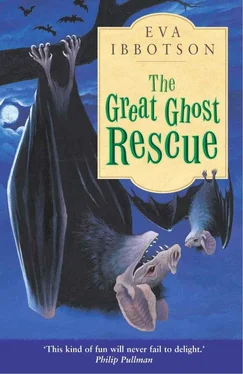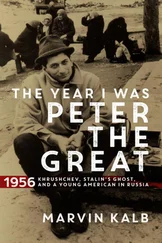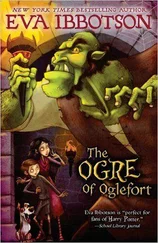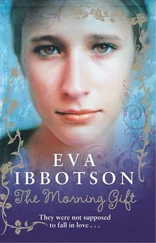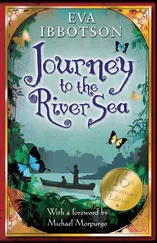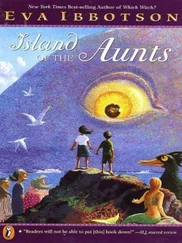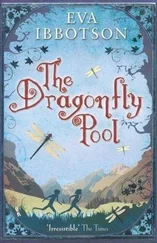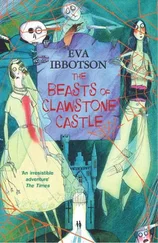The Great Ghost Rescue
by
Eva Ibbotson
To Lalage, Toby, Piers and Justin
Eva Ibbotson writes for both adults and children. Born in Vienna, she now lives in the north of England. She has a daughter and three sons, now grown up, who showed her that children like to read about ghosts, wizards and witches ‘because they are just like people but madder and more interesting’. She has written five other ghostly adventures for children. Which Witch? was runner-up for the Carnegie Medal and The Secret of Platform 13 was shortlisted for the Smarties Prize.
Her novel Journey to the River Sea won the Nestlé Gold Award and was shortlisted for the Whitbread Children’s Book of the Year Award and the Guardian Fiction Award. The Star of Kazan won the Nestlé Silver Award and was shortlisted for the Carnegie Medal.
Which Witch?
The Haunting of Hiram
Not Just a Witch
The Secret of Platform 13
Dial A Ghost
Monster Mission
Journey to the River Sea
The Star of Kazan
The Beasts of Clawstone Castle
For older readers
A Song for Summer
The Secret Countess
The Morning Gift
Humphrey the Horrible was a ghost. Actually his name was simply Humphrey but he had added ‘The Horrible’ because he thought it would help him to become horrible, which at present he was not.
Nobody knew what had gone wrong with Humphrey. Perhaps it was his ectoplasm. Ectoplasm is the stuff that ghosts are made of and usually it is a ghastly, pale, slithery nothingness — a bit like the slime trails left by slugs in damp grass or the mist that rises out of disgusting moorland bogs. But Humphrey’s ectoplasm was a peachy pink colour and reminded one of lamb’s wool or summer clouds. And then his eye sockets didn’t leer or glare, they twinkled, and the sounds of his finger bones jangling together made a tinkling noise, like little bells.
His parents, who naturally wanted him to be frightful and ghastly and loathsome like all the best ghosts, worried about him quite a lot.
‘I can’t think why he has turned out like this,’ his mother would say.
Humphrey’s mother was a Hag. Hags have hooked noses and crooked backs and scaly black wings and when they move they give off the most dreadful smells. It was nothing for Humphrey’s mother to smell of mouldy tripe, unwashed armpits and minced maggots in a single afternoon.
Humphrey’s father would try to comfort her. ‘Don’t worry so much, Mabel,’ he would say. ‘The boy’s probably a late developer.’
Humphrey’s father was a Scottish ghost. He had been killed fighting in the Battle of Otterburn in 1388. This was a very bloody battle in which the English and the Scots killed each other in all sorts of unpleasant ways. Both of Humphrey’s father’s legs had been cut off by a cruel English baron right at the beginning of the battle but he had gone on fighting on his stumps until another wicked Englishman put a sword through his chest. Now he was called The Gliding Kilt because when you looked at him all you could see was the bottom of his kilt and then a space where his legs weren’t . He was a very impressive ghost and a good father.
But the Hag, like most mothers, was a great worrier and she wouldn’t be comforted. ‘He’s not a bit like George or Winifred,’ she moaned.
George was Humphrey’s older brother and he was a Screaming Skull. Screaming Skulls are just a skull with no body attached to it. If you try to bury a Screaming Skull it just screams and screams until you dig it up. They scream if you try to move them, too, or if anyone is coming that they don’t like the sound of. In fact they scream most of the time and the noise they make sounds like seven or eight people having their insides pulled out so that someone who has heard a Screaming Skull scream is never quite the same again. Naturally this made them rather proud of George.
As for Wailing Winifred, Humphrey’s sister, she used to glide about in a long, grey shroud trying to catch a little bowl of water which floated in front of her. The water in the bowl was for her to wash out her bloodstains. No one could remember how Winifred had got so bloodstained; she must have done something really bad before she died because she was certainly covered in the stuff. But however fast Winifred went, the bowl always went faster. Naturally this upset her so that she used to wail a lot, and that was why she was called Wailing Winifred.
They were a very happy family. There was probably not a more devoted couple anywhere in the world than the Hag and the Gliding Kilt. She kept all her best smells for him. He found her squinty eyes and long, black whiskers beautiful. Both of them loved George and Winifred. And they loved Humphrey too, very much — even though he wasn’t horrible. In fact Humphrey, being the youngest, was perhaps just a little bit spoilt.
Not only were they a very happy family but they were a very lucky one because they lived in just the sort of place that ghosts like best. It was a castle in the north of England, with a damp, dark dungeon crawling with large grey rats, a moat filled with green, slimy water and a drawbridge which still had the hair of a murdered robber stuck to the rusted iron with dried blood.
The castle was called Craggyford Castle, so that Humphrey and his family were known as the Craggyford ghosts.
They lived very simply. Humphrey slept in a little coffin under a yew tree in a corner of the churchyard and every night the Hag came to tell him bedtime curses and when she bent over him to say goodnight the smell of very old feet or extremely mouldy mutton would drift into his nose holes and send him happily off to sleep.
By day, of course, the children did their lessons. They had to learn how to leer, how to rattle their chains and how to pluck off people’s bedclothes with icy and skeletal fingers. (George, who was only a skull and didn’t have any fingers, had extra screaming practice instead.) Most of all, of course, they had to learn how to vanish.
Humphrey was particularly bad at this. He was the most patchy, messy, mucky vanisher you could imagine. Sometimes he’d forget a foot, sometimes a shoulder and once everything vanished except his stomach which was left hanging in the room like a round, Dutch cheese. Worst of all was his elbow. Humphrey’s left elbow just would not disappear.
‘You’re not trying , Humphrey,’ the poor Hag would scream.
‘I am, Mother, honestly,’ Humphrey’s voice would come. ‘It’s just sort of… stuck.’
Winifred, who was a very gentle, kind girl in spite of wailing such a lot, would try to make things better.
‘It doesn’t really show up much, Mother. It just looks like a… cobweb or a bit of dust.’
‘Rubbish, Winifred. It doesn’t look in the least like a cobweb or a bit of dust. It looks like an elbow. Now again, Humphrey. Harder .’
But however difficult the lessons were, there was always lots of time afterwards for them to do what they liked. There was a wood full of yellow-eyed owls where they played hide-and-seek, or they ran gliding races round the battlements. And of course they had lots of friends. There was Loopy Fred, who was a tree spirit and lived inside a hollow oak on Hangman’s Hill, moaning and gibbering and waiting for people to come past so that he could turn their hair white overnight. Then there was the Phantom Sow who lived on Craggyford Moor. Pigs don’t become ghosts all that often but this one had been hunted down and killed by no less a person than the second cousin of Robin Hood. Not that she was conceited about this: she was a very peaceable sow who liked Humphrey to scratch her back and enjoyed snuffling among the beech nuts just as if she were an ordinary farmyard animal.
Читать дальше
